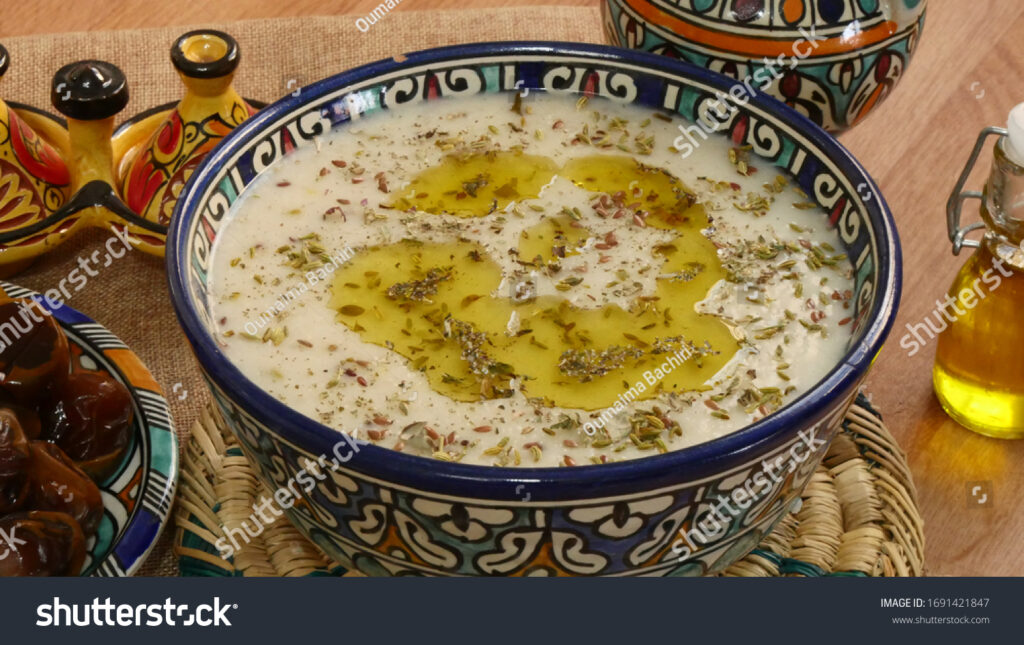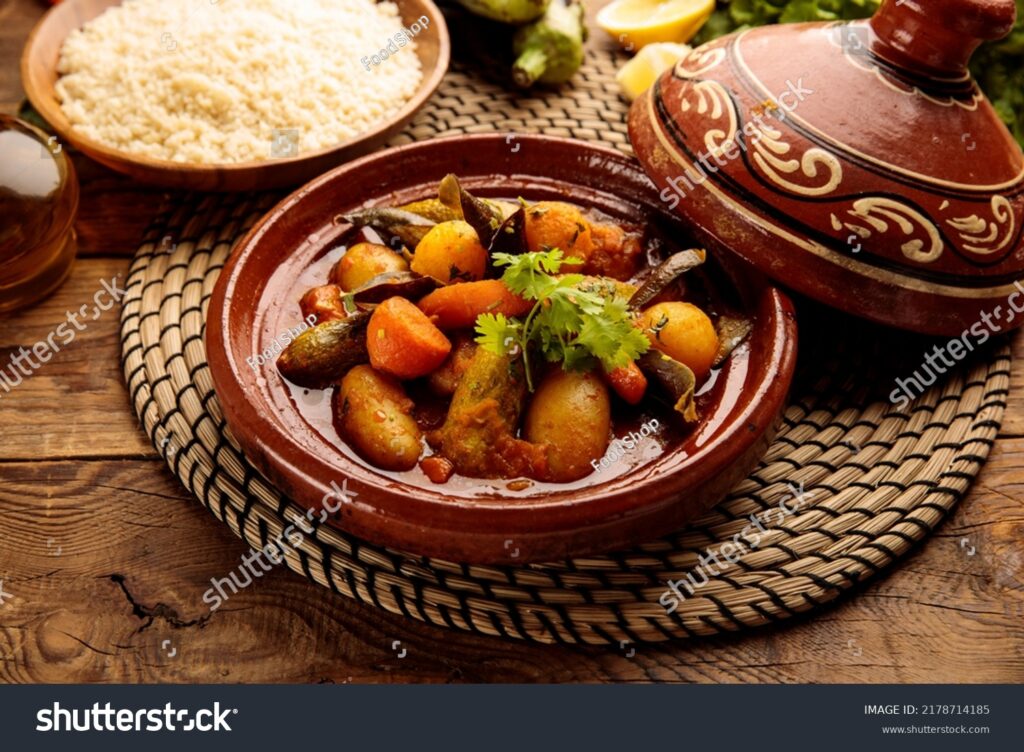A guide to Moroccan cuisine
A guide to Moroccan cuisine
The souks of Marrakech wake with a medley of aromas—cinnamon and cumin, the smoke of a nearby grill, the perfume of orange blossoms drifting from a courtyard hidden from view. Vendors call out in Arabic and French, their hands deftly portioning saffron into tiny, crinkled bags. A pot of mint tea, poured high into slender glasses, steams in the morning air. In Morocco, food is an invitation, a story told in spice and simmer, a meal stretching into a slow ritual of hospitality.
It begins with the humblest of comforts. A bowl of traditional semolina soup with milk and dates, served before sunrise in quiet kitchens and at late-night roadside stalls. The broth, thickened with fine semolina, is softened with warm milk, tinged with the subtle warmth of anise.

Beyond the cities, past olive groves and red-earth villages, the Moroccan table unfolds into a bountiful spread. Lunch is a leisurely ritual, a spread of mezze, fresh bread, and briny olives laid before the main attraction. A brass-plated tagine, its conical lid trapping steam, is lifted with a quiet reverence. The aroma that rises is deeply inviting—preserved lemons, saffron, garlic mellowed by hours of heat. Each region has its own signature, but at its core, the tagine is a study in patience. Chicken, lamb, or fish, slow-cooked until tender, absorbing the flavors of the clay vessel itself.

In Fez, a tagine might arrive scented with prunes and almonds, a play of sweet against savory. In the coastal town of Essaouira, a fisherman’s version brims with chermoula-marinated sea bass, its sauce infused with cumin and paprika.
In Morocco, tradition insists that tagine be served with bread, but in some homes, it arrives alongside fragrant rice. The grains, pearled with butter and spiced with turmeric, cradle the sauce, soaking up its golden richness. This is not the hurried food of a modern world—this is a dish that waits, a meal that demands attention. Each bite carries the depth of history—flavors borrowed from Andalusian kitchens, from Arab spice traders, from the Berbers who have simmered stews in earthen pots for centuries.
The meal stretches long into the afternoon. Fingers tear into warm khobz, scooping up the last of the sauce. A tray of oranges, sprinkled with cinnamon, follows, chased by tiny glasses of mint tea poured in a show of precision. Here, a meal is more than sustenance—it is an act of connection, an expression of culture, an offering of time.
A Chef’s Tour of Marrakech navigates the medina’s best eats with a seasoned guide, leading visitors through the city’s culinary heart. The tour begins with slow-roasted mechoui, lamb cooked in underground ovens until its skin crisps, the meat falling away at the touch of a fork. A stop at a small, unassuming stall yields a bowl of harira—tomato-rich, spiced with ginger and cinnamon, thick with chickpeas and lentils.
In a tucked-away riad, the moment arrives: Moroccan tagine with rice, served in a dish painted with intricate geometric patterns. The lid is lifted, releasing a plume of saffron-scented steam. Chicken, slow-cooked with preserved lemons and olives, nestles into the golden rice, each grain infused with turmeric and butter.
The journey continues, past carts piled with candied almonds, past vendors peddling honey-drenched chebakia. In a small square, a steaming glass of mint tea marks the finale. The chef pours from high above, the tea frothing as it fills the glass, the scent of fresh spearmint wrapping the evening in warmth. This is Marrakech in its purest form—a city where food is history, where every meal tells a story, where the past lingers in every bite.